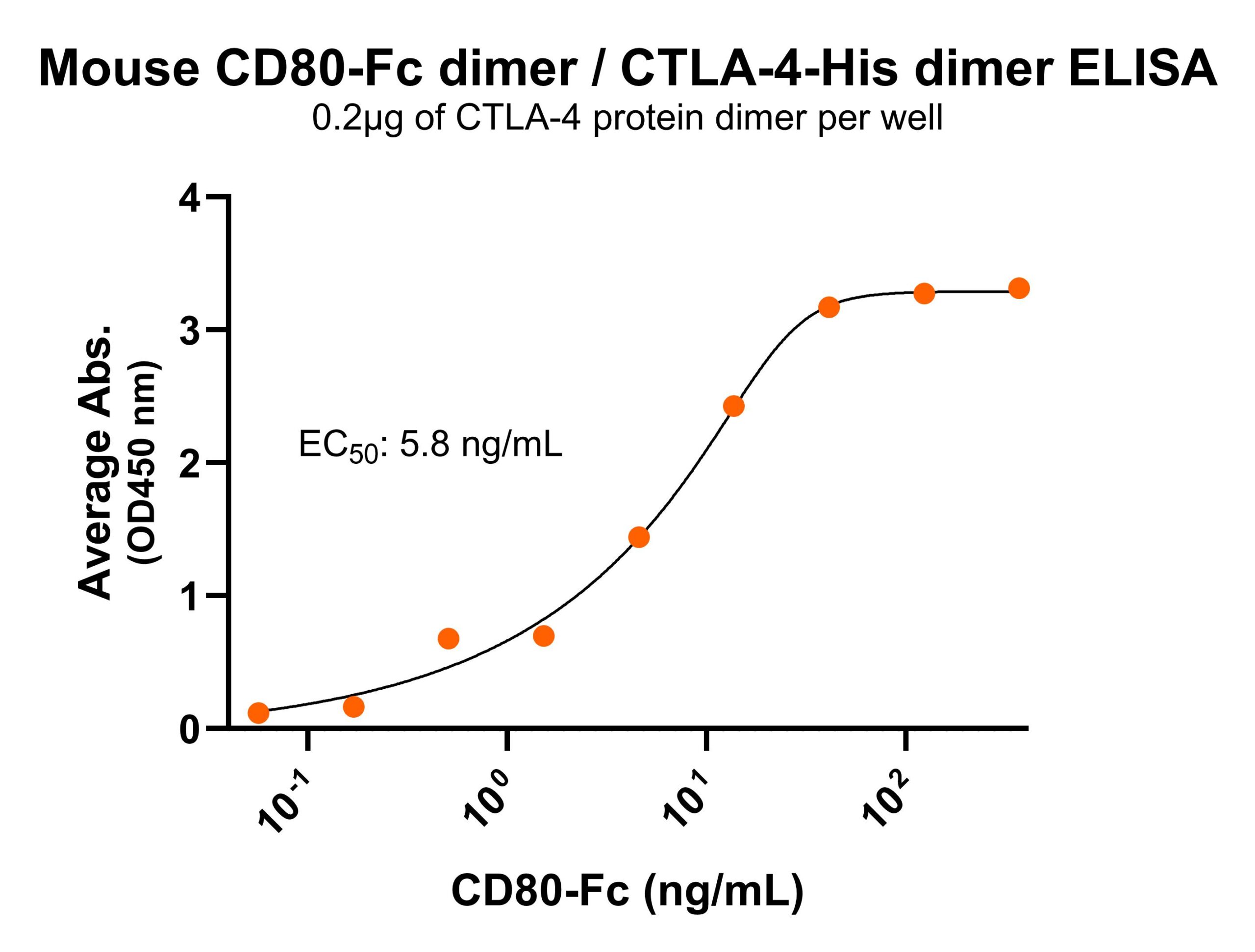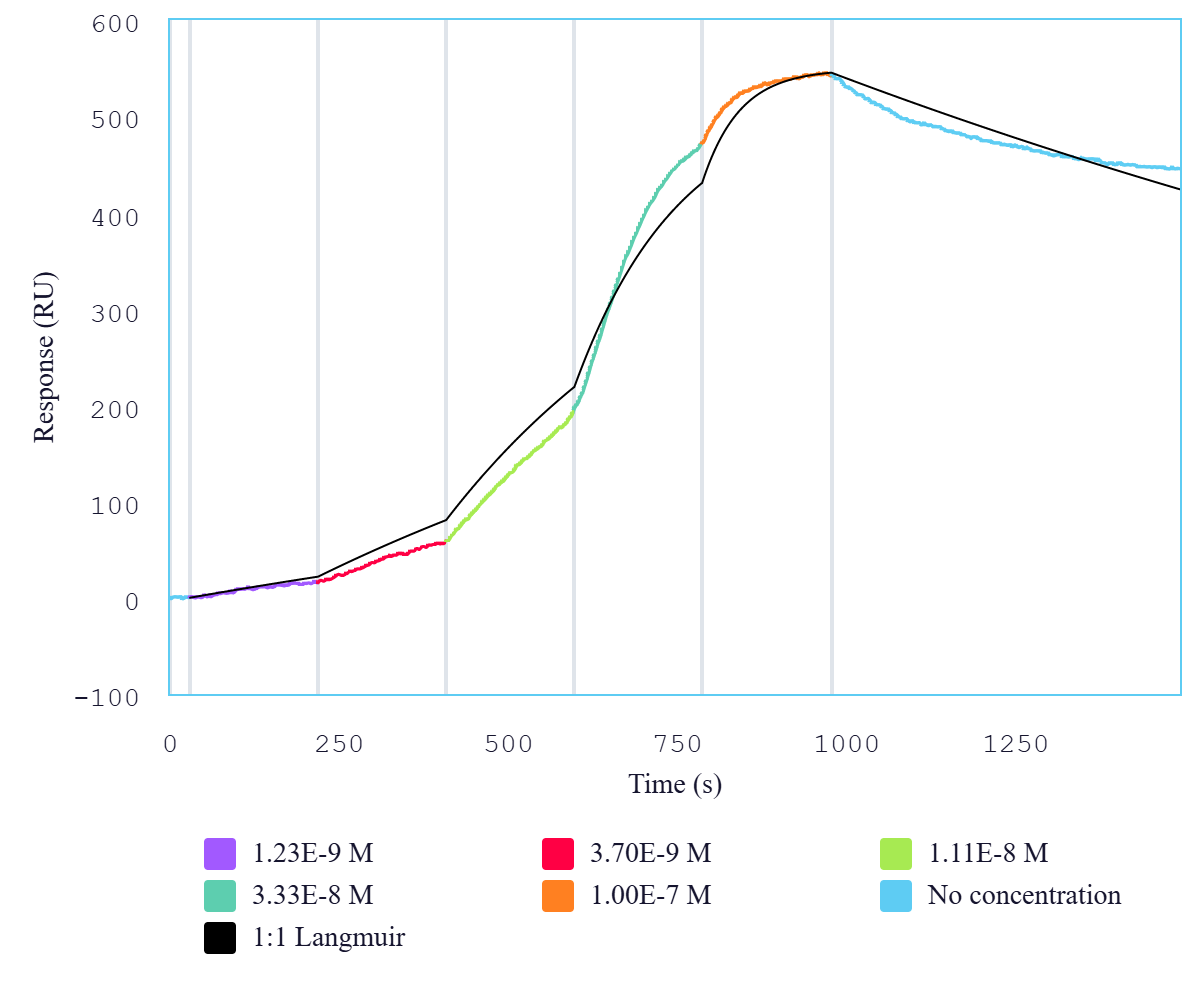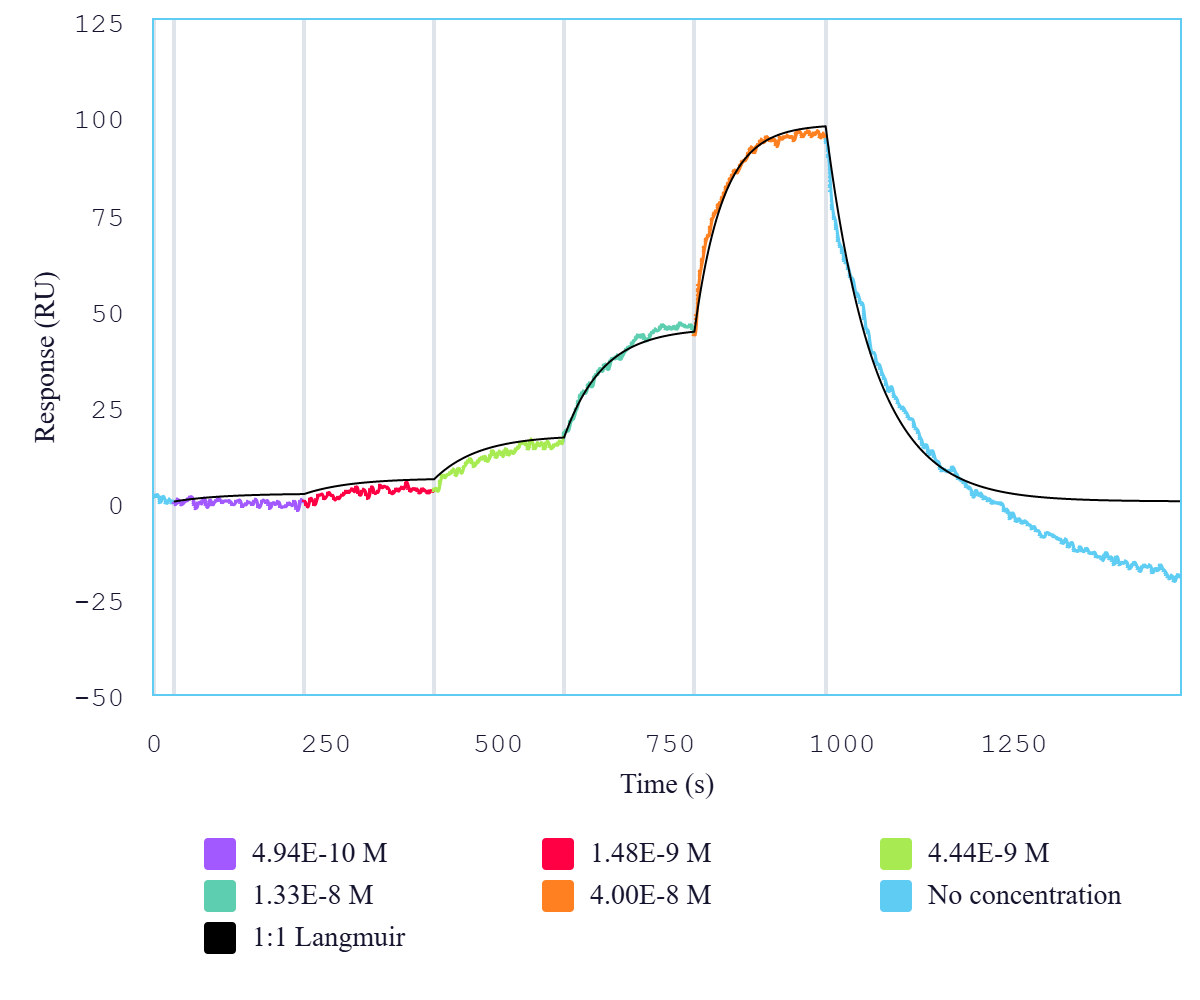 MW: Molecular Weight marker reduced condition
NR: CTLA-4 dimer under non-reduced condition
MW: Molecular Weight marker reduced condition
NR: CTLA-4 dimer under non-reduced condition Immobilized mouse CTLA-4 protein dimer
Immobilized mouse CTLA-4 protein dimer His Tag (CSP-25185-01) at 2 μg/mL (100 μL/well) can bind mouse CD80 protein dimer
His Tag (CSP-25185-01) at 2 μg/mL (100 μL/well) can bind mouse CD80 protein dimer Fc Tag (Cat. No. CSP-25187-04)
Fc Tag (Cat. No. CSP-25187-04)For Research Use Only (RUO)